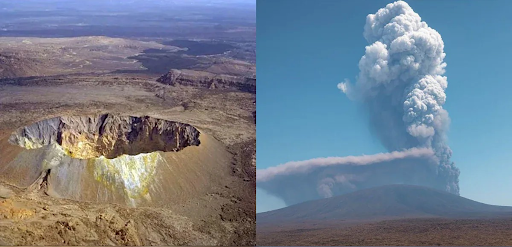




Source: Indian Express
Disclaimer: Copyright infringement not intended.
Despite La Niña's typical cooling effect, January 2025 recorded unusually high temperatures, emphasizing the growing impact of global warming.
|
India |
In India, La Nina is expected to lead to above-average monsoon rainfall from July to September, which may result in a decrease in the production of pulses in the Indo-Gangetic Plains, but rice production may see an increase. |
|
Southeast Asia |
In Southeast Asia, including Indonesia, Malaysia, and the Philippine, La Nina brings above-average rainfall, causing flooding but boosting rice and palm oil production |
|
South America |
In Southern Brazil, Uruguay, northern Argentina, and southern Bolivia, La Nina causes below-average rainfall, leading to drought and affecting soybeans and maize. In contrast, Northern Brazil, Colombia, Venezuela, and parts of Ecuador and Peru experience wetter conditions, leading to potential flooding. |
|
Oceania |
In Australia, the region experiences above-average rainfall in the northern and eastern regions, often linked to severe flooding. |
|
Africa |
In East Africa, La Nina brings drier conditions in December and January, negatively impacting crops harvested in February and March. In Southern Africa, La Nina causes above-average summer rainfall, benefiting agriculture with higher yields of maize, sorghum, wheat, and soybeans |
|
North America |
In the US, La Nina causes drier conditions in the south and wetter, stormier weather in the north, including Alaska and Canada. |
Agriculture: Boosts crop production due to strong monsoons, aiding farmers.
Water Resources: Improves reservoir levels, reducing water stress.
Energy: More rainfall ensures better hydropower generation.
Relief from Heat: Less severe heatwaves compared to El Niño years.
Sources:
|
PRACTICE QUESTION Q.Consider the following statements regarding La Niña and its impact on global climate:
Which of the statements given above is/are correct? (a) 1 and 2 only (b) 1 and 3 only (c) 2 and 3 only (d) 1, 2, and 3 Answer: (a) Explanation: Statement 1 is correct La Niña is a climatic phenomenon associated with the cooling of sea surface temperatures in the central and eastern Pacific Ocean, affecting global weather patterns. Statement 2 is Correct La Niña generally has a cooling effect on global temperatures, but in recent years, human-induced climate change has diminished its impact. Statement 3 is incorrect In January 2025, despite the presence of La Niña, global temperatures remained unusually high, indicating that the effects of climate change are overpowering La Niña’s cooling influence. |






© 2025 iasgyan. All right reserved